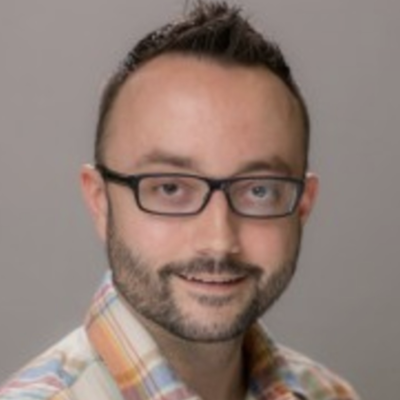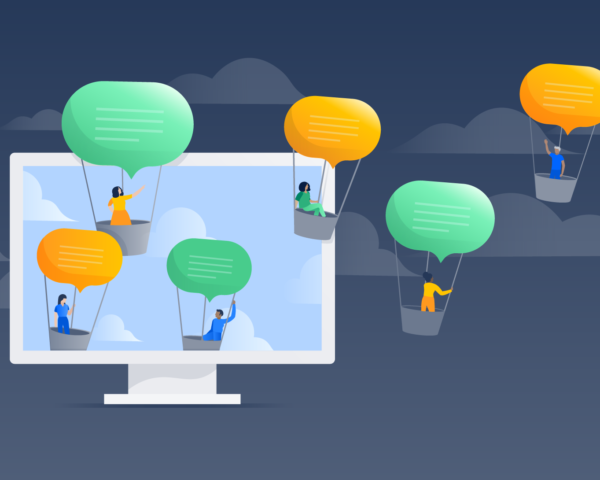What’s new and what’s changed in SAFe 5.0
These updates signify a big step in the right direction for scaling enterprises.
On October 2nd, Scaled Agile Inc announced a new iteration of their Scaled Agile Framework for Enterprises (SAFe). The changes to SAFe 5.0 signify a huge step in the right direction, as companies look to expand agility across their enterprises. Scaled Agile simplified the presentation of the model while strengthening customer centricity, expanding agile beyond technical teams, and emphasizing the impact of implementing agility at the portfolio management level. Read more to discover what’s new and the changes to come in SAFe.
Several changes to the SAFe framework are covered in this blog post. The majority of these changes always existed within SAFe, and Scaled Agile added more visibility, structure, and guidance in this version. The rest of this post covers the major changes, accompanied by Atlassian commentary on the changes (in italics). We estimate that SAFe 5.0 will GA in early 2020; bookmark this page and we will continue to update it as we learn more details.
What’s New
The biggest change you’ll notice is to the presentation of the model and alignment of components.
New level: Essential SAFe
Scaled Agile combined the Team and Program levels into a new “Essential” level, invoking a mantra taught during SAFe training: “Train Everyone, Launch Trains.” You can’t implement SAFe without launching at least one Agile Release Train (ART). The Program level contained the ARTs, but the Team level contained the people working on the ARTs. You can’t have trains without people, and you can’t have SAFe without launching an ART. Grounding the framework in practiced reality netted the decision to combine the previous levels into a new level, called Essential SAFe.
This change makes the most sense to us; even SAFe trainings emphasize the “Essential” elements of SAFe. This new level aligns everything together and gives people a really good place to start, as well as defining SAFe. We would advocate for an essential version of portfolio management, a lightweight place to start, since the only way to truly scale agile practices involves agility at the portfolio level as well.
New core competencies
SAFe 5.0 introduces two new core competencies, grounded in the ethos of being agile. The first, organizational agility, is the extension of agile beyond development teams and into the broader organization. Continuous learning culture delivers on the pillar of “relentless improvement,” which is a key focus area of this competency, in addition to supporting a learning organization and embracing a culture of innovation.
We believe the introduction of organizational agility, with emphasis on agile teams beyond developers, is the right way forward, but also one of the hardest things for companies to adopt. This kind of implementation will require substantive leadership change that may be uncomfortable for many, to set a strategic plan and vision but remain willing to change it based on data (e.g. market changes, new customer challenges, and early adoption numbers). It will be interesting to see how this translates into practice, given that companies have boards of directors and shareholders to answer to who are looking for linear one-, three-, and five-year plans. Everyone at the leadership level should understand that this won’t mean “do not have a plan;” but rather, “be willing to make a plan, and then change it quickly, when the data says you should.”
New framework “roof”
Scaled Agile believes that a company adopting SAFe cannot achieve true business agility unless it adopts the Portfolio level of SAFe. Two levels – Essential and Solution – do not include Business Agility, since they do not include the Portfolio level. Scaled Agile has stated that these levels are not enough for a company to achieve business agility.
Portfolio agility requires buy-in from the top down to release the hold on strict multi-year and annual planning. As with agile at the team level, this doesn’t mean you don’t plan, it means that you plan with the ability to change your plans quickly. Markets and customers are moving faster than ever (and will continue to accelerate their movement as new technologies emerge and more information is consumed). If your company cannot pivot with your customers, you run the risk of falling behind those that can. If your business strategy continues to drive straight ahead while your customers are turning right, you won’t be able to meet them where they are.
Measure & Grow is a new addition to SAFe that helps companies run a business agility assessment in an effort to understand where they are in their agile transformation. By measuring where you are, you can focus on where you need to grow, allowing you to prioritize the underlying SAFe work to support your transformation.
Atlassian customers that have adopted SAFe echo this very sentiment when leadership is still operating in a rigid waterfall mentality, while teams are attempting to adopt scaled agile practices. They find themselves falling short of their promises while facing resistance to changing course at the team or program level. Unfortunately, calling something agile does not make it agile. The end goal is to be a company that can respond efficiently to market and competitive changes, so that you can become or remain the top choice for your customers. As markets move faster and needs evolve more rapidly, your business must be able to respond just as quickly, or you risk falling behind the competition.
Enhanced focus: Customer Centricity
Under the new Essential level of SAFe, Scaled Agile added Customer Centricity and Design Thinking. SAFe has focused on organizing your ARTs around the value your customers receive rather than other structures (such as the organizational chart, or established product teams). This principle is the cornerstone of the Essential level: everything starts with the customer.
SAFe recommends building the ARTs around value streams, which all revolve around what the customer gets from the business. It’s great to see the visual representation of the customer on the framework was moved to the Essential Level. Atlassian puts our customers front and center of the decisions we make, always looking to do the right thing for the most people. And in turn, our customers put their customers front and center of their businesses.
New principle: organize around value
Scaled Agile has increased their nine core principles to ten, adding a new one: organize around value. Previous versions of SAFe addressed value stream mapping and organizing teams around value, but this is the first time that it’s been called out as a core principle of SAFe. When conducting value stream mapping, the goal is to understand how your customers receive value from your products (from trigger to cash), and then to build your teams and ART around that stream of value.
It’s good to see this as an official principle, but we think this is the component of SAFe that customers need the most help with. Everything in SAFe is built on getting your value mapping exercise right, but we often see that customers are tweaking the value streams to fit their existing teams, rather than the reverse. It’s understandable, in large enterprises, as it requires a potential personnel restructure – changes like this can be difficult to embrace. And it’s not always clear when or how you to execute these changes, or what a phased migration from old to new should look like. Due to this difficultly, we see customers who hold off on organizing their teams around value streams, which may slow down or inhibit their ability to realize greater organizational agility. We definitely see the value and importance in value streams!
What’s changed
Core competency: Lean Portfolio Management
A lot of work was put into the Lean Portfolio Management core competency, to better emphasize how enterprises adopt LPM as part of their journey towards business agility. They added a new “Portfolio Vision” area of focus, which goes beyond the Portfolio Canvas in previous versions. We’re also seeing the introduction of objectives and key results (OKRs) as a way to document strategic themes.
Reorganization of components
When you review the overall SAFe framework, you’ll notice a simplification and better alignment of the different components, with the goal of removing repetition and confusion. Core components and people were moved to the left side of the framework, with a stronger emphasis on roles. Nothing in SAFe can be achieved without focusing on the people first, so these roles were isolated and moved to the left of the SAFe frameworks.
Refreshed core competencies: DevOps and Business Solutions & Lean Systems
These two core competencies have been renamed and reworked. Agile Product Delivery (previously DevOps) remains largely the same, with a heavier emphasis on the “agile product manager.” Enterprise Solution Delivery (previously Business Solutions & Lean Systems) has undergone a major rewrite, with stronger content centered on delivering large solutions to market, including systems and solutions engineering, coordinating trains and suppliers, managing the solution lifecycle, and focusing on living systems.
Renaming
A couple areas have been renamed to better align with the intent of the focus. For example, the SAFe Implementation Roadmap’s final step is now Accelerate (previously Sustain and Improve). The Portfolio level has a focus area called Portfolio Vision (previously Portfolio Canvas). These changes are meant to better communicate the real purpose of the focus area.
Scaled Agile’s announcement of SAFe 5.0 is the right direction for companies looking to scale their agile practices throughout the organization. And although it may look simple, we know that none of this is easy. We look forward to helping you accelerate your agile transformation at scale.
Want to learn more about these changes? Sign up for our webinar below.



